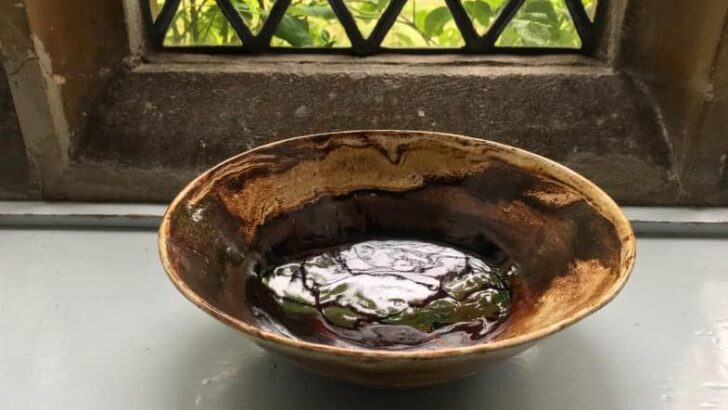Your cart is currently empty!
Firing
-

3 Stages of Firing Clay – A Beginner Guide to Firing Pottery
Firing pottery can seem like a mysterious process to the new potter. There are lots of technical terms that can sound quite foreign. So, I thought it would be helpful to write an overview of the stages of firing clay. Here is a guide to the 3 stages of firing clay. There are 3 main…
-

How Long Does a Bisque Firing Take? – 6 Factors at Play
When I first started firing my own pots, one of my questions was how long does a bisque firing take? This can be a pressing question if you are up against a deadline or excited to see your fired ware. Over time, this is what I have learned about bisque firing pottery… A bisque firing…
-

Firing Greenware to Bisque – 11 Tips on Bisque Firing
When I first got my kiln, I had no idea how to use it. The first hurdle was to learn about firing greenware to bisque. It was a bit of a learning curve for me and some of it I learned through trial and error. So, I thought it would be helpful to put together…
-

Can you Stack Greenware in a Bisque Fire? Stacking Greenware
When I first started firing my own pottery, I was very cautious about how I loaded the kiln. I’d heard that greenware pottery could touch when it was being fired, but I didn’t quite trust this was true. After a while, I wanted to know if I could bisque fire more pottery in one load. …
-

How to Seal Raku Pottery – Can Raku Be Waterproof?
Raku pottery can look lovely. However, it is porous and fragile. The question of whether raku is waterproof has been debated for a long time. There has been much debate around whether can raku be food-safe. This article looks at these issues and considers whether there are effective ways to seal raku pottery. There are…
-

Copper Matte Raku – How to Make Copper Fuming Raku Pottery
Copper matte raku, also known as copper fuming raku is a low fire technique that can produce iridescent multi-colored pottery. It involves the application of a simple copper oxide wash to bisque pots. These are then raku fired and put into a post-firing reduction atmosphere to create a vivid array of rainbow colors. There are…
-

6 Reasons to Use Pyrometric Cones with an Electric Kiln
If you have a kiln with a digital controller, you might be tempted to think that you don’t need to use pottery cones when you are firing. After all, the controller monitors the temperature in the kiln. But even if you have a digital controller, it’s wise to use pyrometric cones with an electric kiln…
-

How to use Pyrometric Cones – Witness Cones Made Simple
Even if you use a kiln with an electric controller, it’s a good idea to use pyrometric cones when firing. But there are different types of cones and these are used differently. If you’ve just started firing your ware, you have probably wondered how to use pyrometric cones. This article is all about how to…
-

Glazing Greenware – Can you Glaze Unfired Clay?
Glazing greenware used to be the norm. However, more often, these days, pottery is fired twice. It is bisque fired first to make it ceramic. Then it is glaze fired for decorative reasons and to make it usable as dinnerware or as a water-containing vessel. However, not everyone bisque fires their pottery. Some potters do…
-

What is Fired Clay Called? – The 3 Main Terms For Fired Clay
The world of clay is full of terms that might sound a bit odd when you first encounter them. If you are new to ceramics, you might have found yourself wondering ‘what is fired clay called?’ Here is an overview of three main terms that are used to refer to clay that has been fired. …
-

Low Fire Vs High Fire Clay – Which Clay is Right for You?
There are lots of different types of clay for pottery. One of the ways that pottery clay is categorized is the temperature it should be fired at. Low fire is best fired at low temperatures. And high fire clay is best fired in the high-temperature range. But which will suit you best? This article is…
-

Can You Put Low Fire Glaze on High Fire Clay? Will it Work?
If you are learning about glazing, there is a lot to take on board. There is a large range of different glazes to choose from. And like clay, you can get low fire, mid fire, and high fire glazes. You may have been wondering if you can put low fire glaze on high fire clay. …
